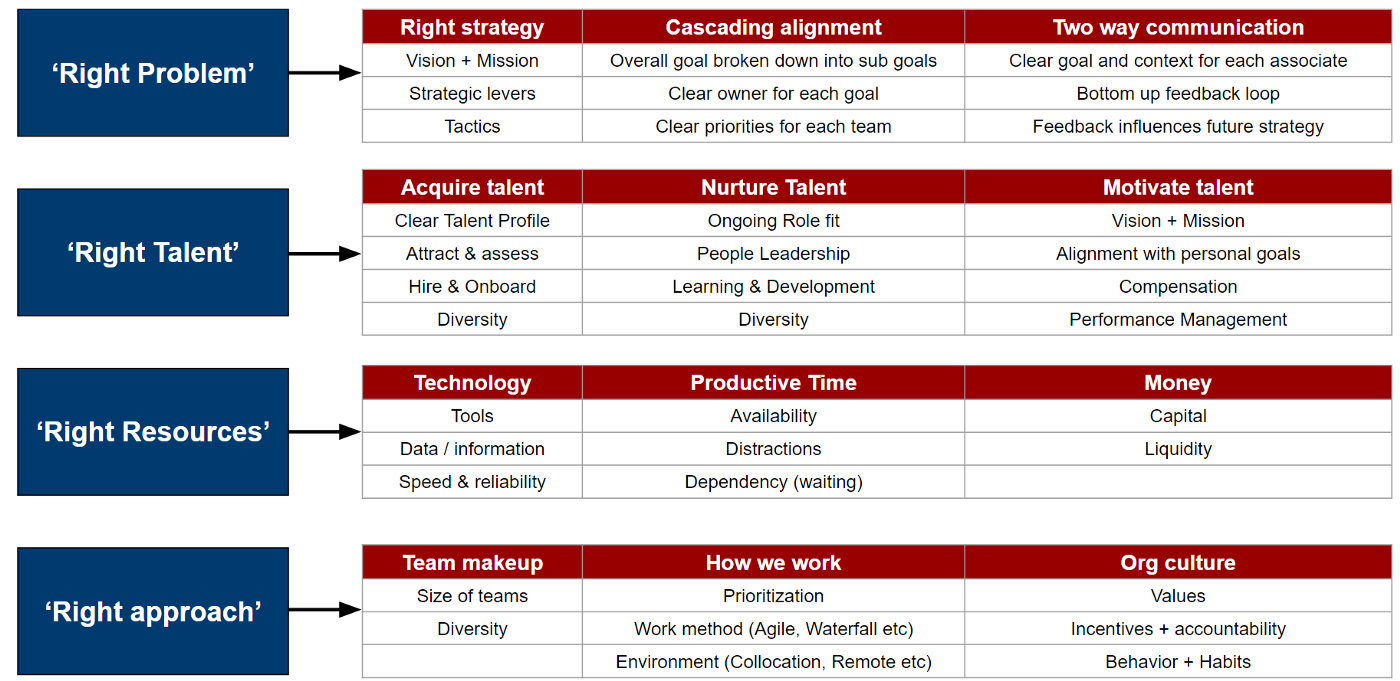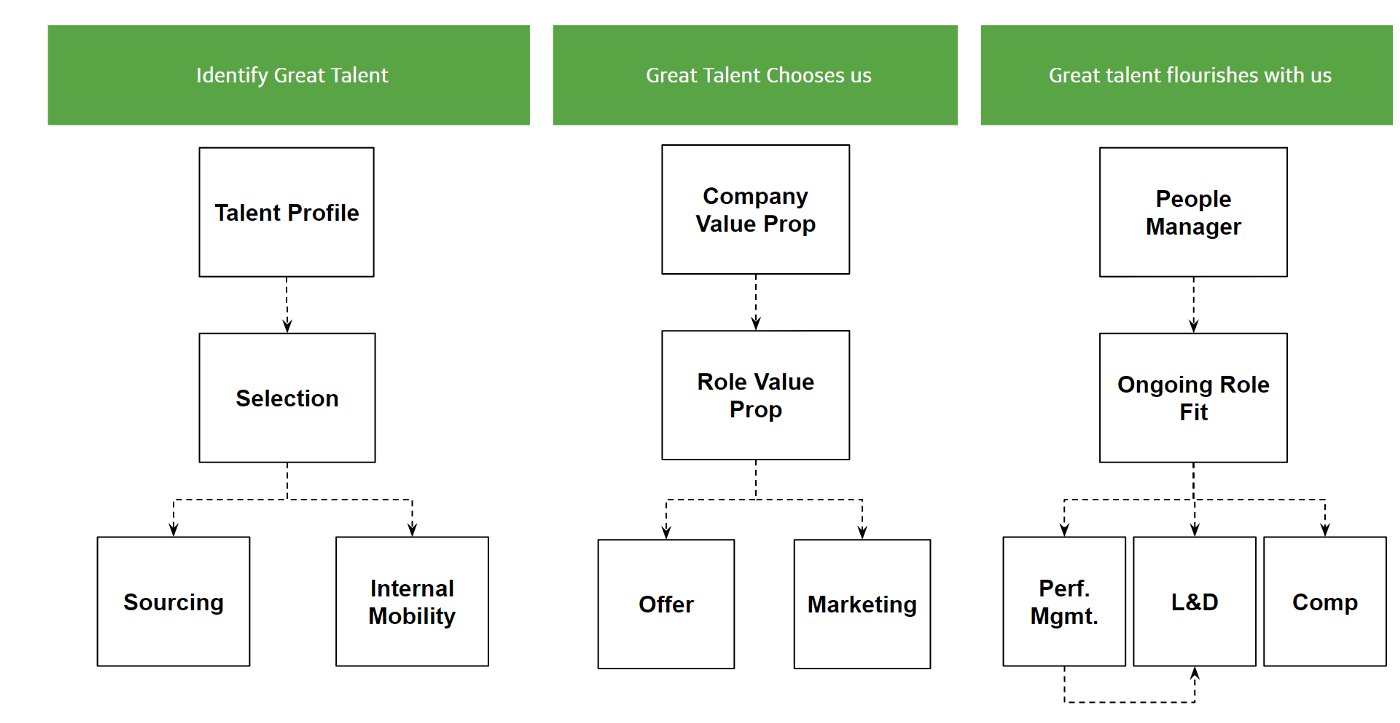Using Systems Thinking to Improve the Productivity of Knowledge Workers Part 2
In his last blog, Ashish Parulekar, Head of People Analytics at Capital One, discussed how the cartesian method can be applied to take a structured approach to solving the complex and ambiguous problem of improving the productivity of knowledge workers. He also discussed the challenge of getting overwhelmed as we go deeper in the cartesian tree in search of precise and actionable insights.
In part two of this three part series, he discusses how Systems Thinking can be used to help determine where to start and where to end, in the quest to solve the challenge of improving the productivity of knowledge workers.
Figure 1. First 3 levels of the productivity issue tree
Let’s start with the 3 level productivity issue tree we constructed in the last blog.
Let’s imagine a situation where as the CEO you don’t believe that you have the right talent in place to deliver on the business strategy going forward. As Figure 1 shows, there are a lot of different levers that can be pulled to ensure that the ‘Right Talent’ is in place. It can be tempting to jump to the conclusion that this is a talent acquisition issue, or get into a whack-a-mole mode of trying to address the squeakiest wheel, or even end up in analysis paralysis because there are so many levers and they are all interconnected. This is where systems thinking can help us out.
Figure 2. Talent Acquisition System
For the sake of simplicity let’s start by looking at Talent acquisition as a system. In Figure 2. the talent flows from Right to Left and it can be tempting to start ‘fixing the issues’ in the same direction i.e. start with sourcing; ‘let’s get more people with similar background as those who have been successful with us in the past’. If we attempt to fix sourcing without the right talent profile and selection process we may : 1. find the right candidate but our selection process may reject them 2. find a candidate with a similar background as the right existing talent but they may not have similar competencies and traits as the right talent.
We must start by clearly defining the talent profile that will help deliver on the business strategy i.e. what knowledge, skills, abilities and traits are needed. The selection mechanisms must be designed to reliably evaluate the different aspects of the talent profile. Then we should use the same talent profile to inform the sourcing strategy. This maximises the likelihood of hiring the right talent.
Figure 3. Simplified view of the Right Talent System
We can simplify Figure 2. by focusing just on the components we want to optimise and add similarly simplified views for the rest of the elements of the ‘Right Talent’. The overall system would look something like Figure 3. Now we know the order in which we should optimise the various components of the system and which downstream components need to be informed as we make changes.
Adding Systems Thinking on top of the Cartesian Method has reduced the likelihood of us getting overwhelmed by giving us an order in which we should proceed. But even then there is a question about leverage; which components have the highest ROI ?, how much can they be improved? how much investment does it take to improve them? This is where we finally turn to math i.e. having the right ongoing measurements and analytics in place to generate precise insights. More on that in the next blog…
ABOUT THE AUTHOR
Ashish Parulekar is Head of Talent Acquisition Analytics at Capital One, he also leads People Analytics for all the enterprise and staff teams for Capital One. His mission is to minimize bias and guesswork from 'people decisions' at work. In prior roles Ashish has led Product, Marketing, Data Science and Business Strategy teams at Capital One. He has designed and launched multiple financial and digital products used by millions of customers today. He believes that HR is at the beginning of transformation driven by technology and analytics similar to what Marketing has experienced over the last two decades. He is interested in speeding up this transformation by learning from other practitioners tackling the most challenging problems in the field of people analytics. View more of Ashish’s work here.
Are you driving business value through your People Analytics projects?
The myHRfuture academy is a learning platform for HR professionals looking to invest in their careers and build the skills they need to drive actionable outcomes through the work that they do. All of our online HR certifications reflect the core HR skills you need to develop for the future, giving you a professional edge while providing evidence of the skills you’ve mastered, helping you get ahead and Press PLAY on your Career® for only £25 per month. With over 40+ HR certifications, 800+ pieces of expertly curated content and 200+ hours of learning the opportunities are endless. Start building the skills you need to get ahead today.




